Unleash Your Inner Artist – 10 Stunning Wall Painting Ideas to Ignite Your Creative Side
Tired of staring at the same four blank walls? Your home is a canvas, and your walls are a prime opportunity to express your personality, flex your creative muscles, and transform your living space from mundane to magnificent. Paint is one of the most accessible and impactful tools for a dramatic makeover, and you don’t need to be a seasoned artist to create something truly stunning.
Forget the idea that wall painting is just about slapping on a single, uniform color. It’s time to think outside the paint can! Whether you’re a minimalist looking for a subtle twist or a maximalist ready to make a bold statement, these 10 wall painting ideas are designed to inspire your creative side and help you turn any room into a unique masterpiece. Get ready to roll up your sleeves and let your imagination take the lead!
1. The Sculpted Accent Wall: Beyond Just Color
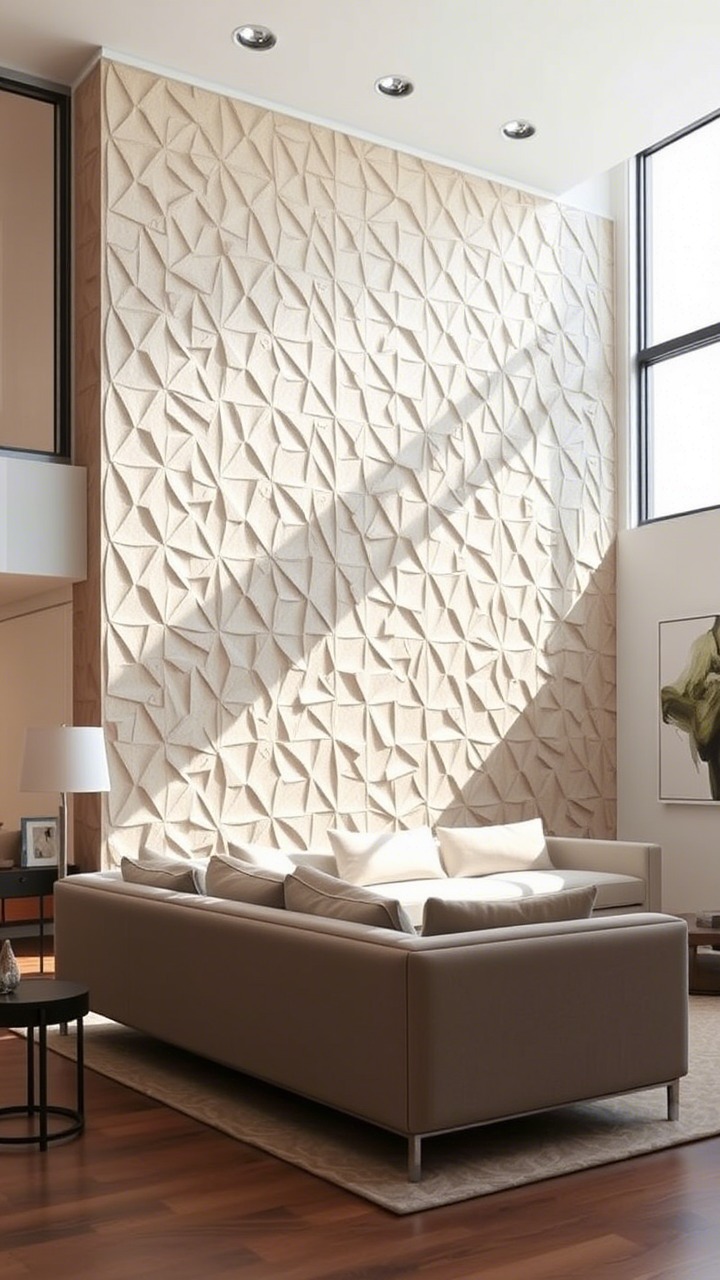
The Idea: Elevate the classic accent wall by incorporating texture or a subtle three-dimensional effect along with color. This isn’t just about a contrasting hue; it’s about making the wall a tactile and visual focal point.
Why It Inspires Creativity: This pushes you to think about how materials interact. You can experiment with adding thin wooden slats or geometric panels before painting them the accent color (or a shade slightly different) to create shadow lines and depth. Alternatively, explore paintable textured wallpaper as a base for your accent color, or even try a Venetian plaster effect if you’re feeling adventurous.
Get Started:
- Consider the main function of the room. A serene bedroom might benefit from soft, flowing textures, while a dynamic living room could handle bolder geometric additions.
- If adding physical elements, plan your layout carefully. Sketch it on paper, then lightly on the wall.
- Choose a rich, captivating color for the accent wall that either complements or daringly contrasts with the other walls. Think deep emeralds, moody charcoals, or warm terracottas.
- Creative Spark: Paint the added textural elements in a slightly different sheen (e.g., matte wall with satin slats) for an extra layer of sophistication.
2. Geometric Marvels: Lines, Shapes, and Bold Statements
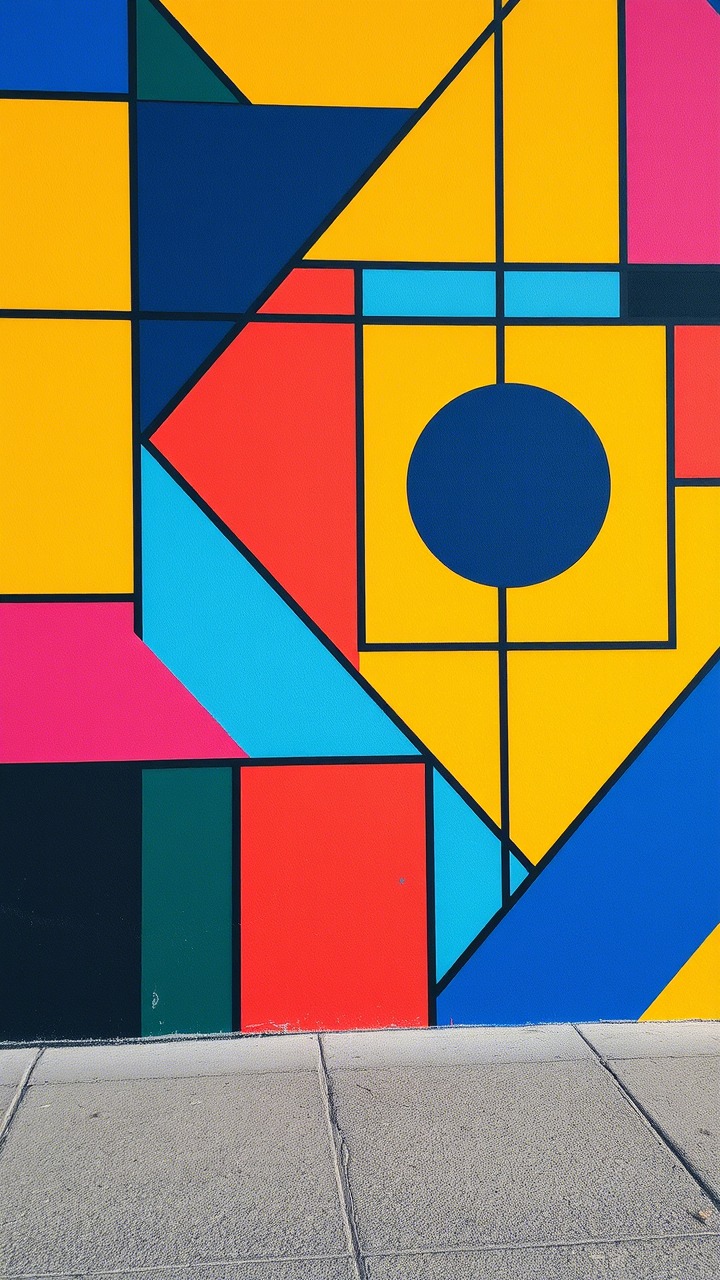
The Idea: Use painter’s tape to create striking geometric patterns – from chevrons and triangles to honeycombs, overlapping circles, or bold asymmetric blocks.
Why It Inspires Creativity: Geometry is all about precision and play. You become a designer, sectioning off your wall into a canvas of interconnected shapes. The color combinations are endless, allowing for everything from subtle tone-on-tone sophistication to vibrant, energetic displays.
Get Started:
- Browse Pinterest or design blogs for geometric pattern inspiration.
- Invest in good quality painter’s tape (like FrogTape) for crisp lines. A laser level can be a lifesaver for ensuring straightness.
- Plan your color palette carefully. You could use analogous colors for harmony, complementary colors for a bold pop, or varying shades of a single hue for a modern, monochromatic look.
- Creative Spark: Don’t limit yourself to one wall. Extend a geometric pattern around a corner or onto the ceiling for a truly immersive effect.
3. Ombré Dreams & Color Washes: Soft Transitions, Artistic Blends
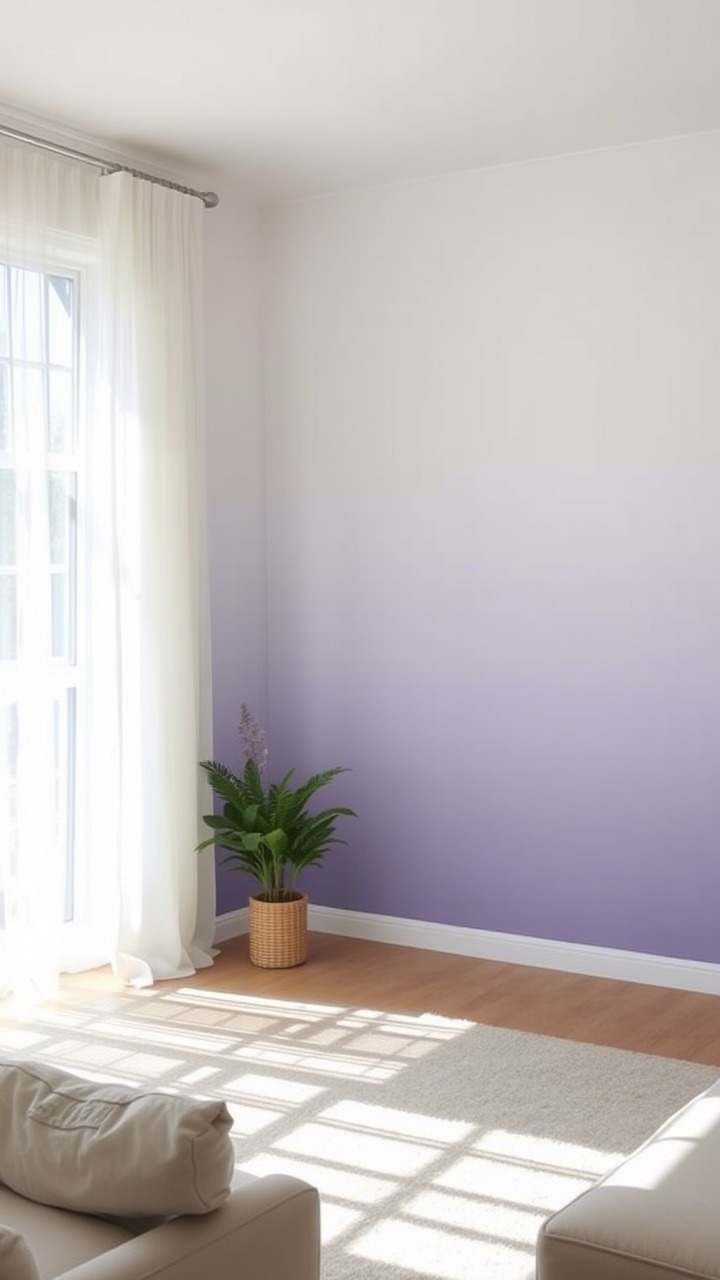
The Idea: Create a gradient effect where one color gradually fades into another (ombré) or a soft, watercolor-like effect with a color wash.
Why It Inspires Creativity: This technique is incredibly artistic and allows for a lot of free-form expression. It’s about blending and layering, much like a watercolor painting. The results can be soft and dreamy or rich and atmospheric.
Get Started (Ombré):
- Choose two or more colors that blend well (e.g., shades of blue, a sunset palette of pink, orange, and yellow).
- Paint your base color (usually the lightest). While still wet, or after it dries, start introducing the next color, blending the meeting point with a clean, dry brush, a sponge, or even a spray bottle with water for latex paints. Get Started (Color Wash):
- Apply a solid base coat (often a lighter neutral).
- Mix your wash color with a paint glaze (this makes it more translucent and extends drying time).
- Apply the glaze mixture with a rag, sponge, or large brush in soft, sweeping, or circular motions, allowing some of the base coat to show through.
- Creative Spark: Try a horizontal ombré to mimic a horizon line or a vertical ombré for a cascading color effect. For a color wash, experiment with different tools to create varied textures.
4. Dynamic Stripes: Reimagining a Classic
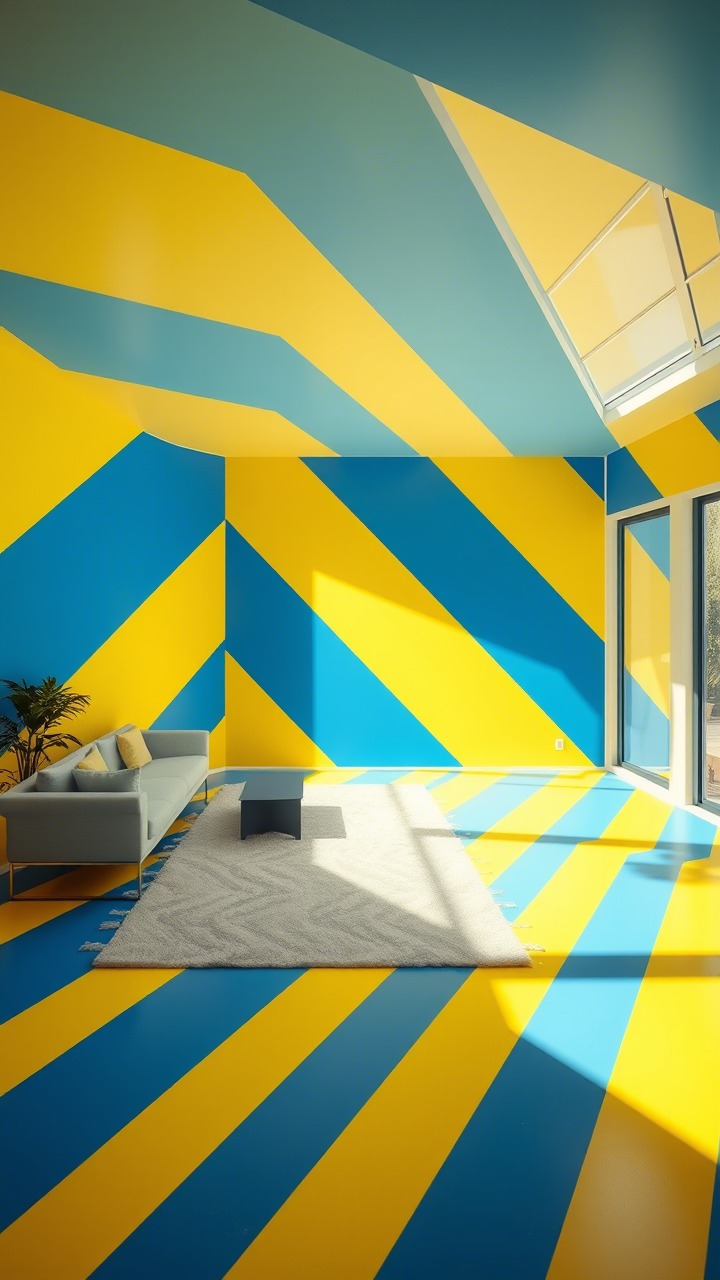
The Idea: Stripes are timeless, but they don’t have to be boring! Think beyond simple vertical pinstripes. Experiment with varying widths, orientations (horizontal, diagonal), multiple colors, or even imperfect, hand-painted stripes.
Why It Inspires Creativity: Stripes can dramatically alter the perception of a room’s proportions. Horizontal stripes can make a room feel wider, vertical stripes taller. Playing with color and width allows you to create anything from a playful nursery to a sophisticated dining room.
Get Started:
- Consider the effect you want. Wide, bold stripes make a strong statement. Thinner, more subtle stripes add quiet elegance.
- Use a level and painter’s tape for precision if you want sharp lines.
- For a more organic, creative look, try hand-painting wavy or slightly irregular stripes.
- Creative Spark: Paint one oversized, bold stripe off-center on a wall, or use stripes of varying sheens in the same color for a subtle, light-catching effect.
5. Artistic Color Blocking: Defining Zones with Purposeful Hues
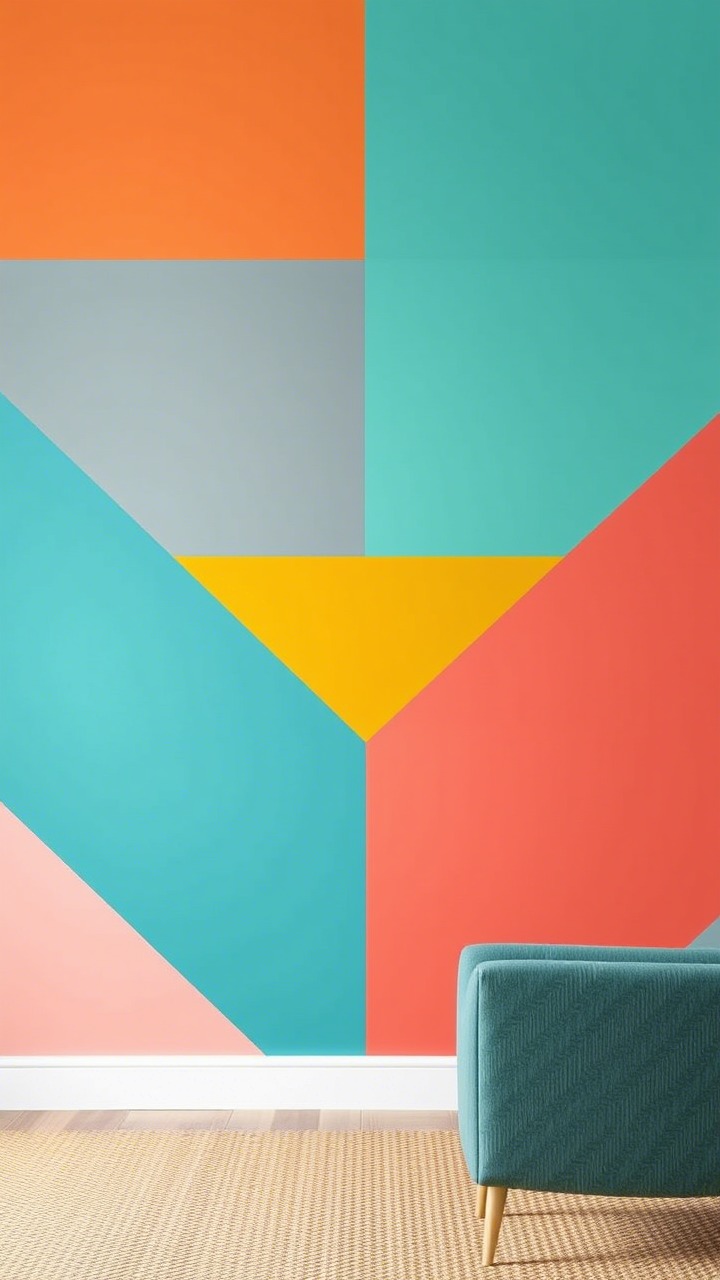
The Idea: Use large, distinct blocks of color to define different areas or zones within a room, or simply as a bold, abstract design feature.
Why It Inspires Creativity: This technique forces you to think about space and form in a new way. How can color delineate a reading nook, a workspace, or simply add an architectural feel to a plain wall? It’s like creating a large-scale abstract painting.
Get Started:
- Sketch out your ideas. Consider how the color blocks will interact with furniture placement and the room’s overall flow.
- Choose colors that either complement each other or offer a striking, intentional contrast.
- Precision taping is key for achieving those clean, sharp edges that make color blocking look so impactful.
- Creative Spark: Extend a color block from the wall onto the ceiling or even a small section of the floor (using appropriate floor paint) for a truly immersive and avant-garde statement.
6. Glimmering Metallic Accents: A Touch of Unexpected Glamour
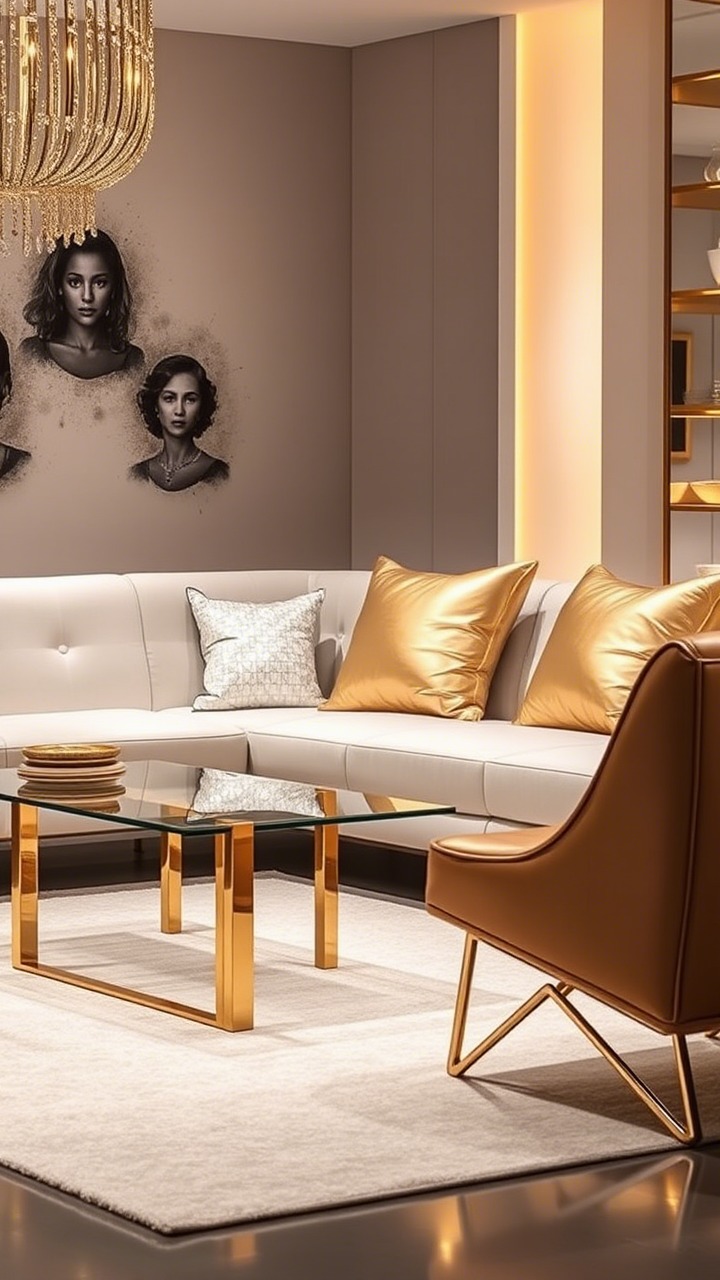
The Idea: Incorporate metallic paints (gold, silver, copper, bronze, rose gold) as accents rather than full-wall coverage. This could be through stencils, painted edges, geometric details, or even a subtly shimmering feature wall.
Why It Inspires Creativity: Metallics add an element of surprise, luxury, and light play. They encourage you to think about how different finishes can interact and how a touch of shimmer can elevate an entire space.
Get Started:
- Less is often more with metallics. Think about highlighting architectural details, the edges of shelves, or creating a delicate stenciled pattern.
- Metallic paints work beautifully against matte finishes, creating a sophisticated contrast.
- Ensure good lighting to really make your metallic accents shine.
- Creative Spark: Try painting the inside of a lampshade metallic for a warm glow, or add thin metallic stripes within a larger geometric pattern.
7. Interactive Chalkboard or Whiteboard Walls: Functional Creativity
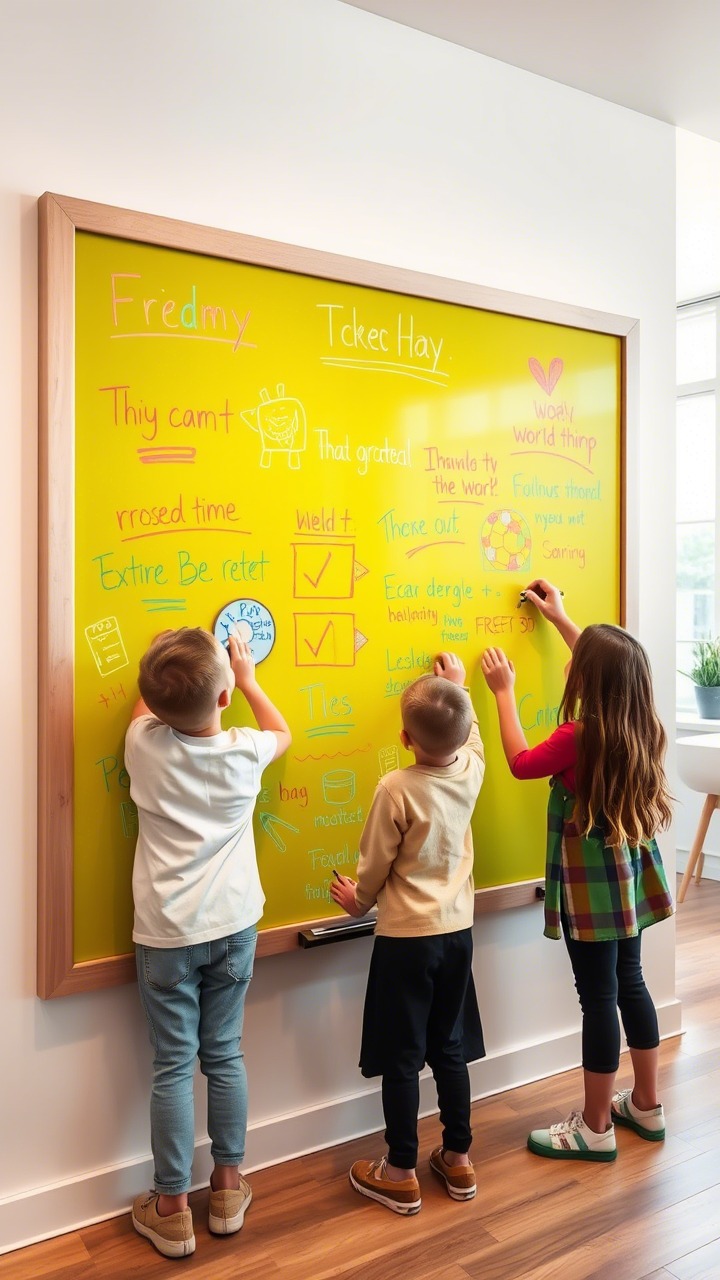
The Idea: Transform a wall, or a section of it, into a fully functional chalkboard or whiteboard surface.
Why It Inspires Creativity: This idea literally turns your wall into an ever-changing canvas for notes, doodles, to-do lists, inspirational quotes, or children’s art. It invites daily interaction and personalization.
Get Started:
- Specialty chalkboard and whiteboard paints are readily available. Follow the application instructions carefully, as they often require multiple coats and specific curing times.
- Consider framing your chalkboard/whiteboard area with painted trim to give it a more finished look.
- This works great in kitchens, home offices, playrooms, or even as a feature in a hallway.
- Creative Spark: Don’t just stick to black for chalkboards – many brands now offer tinted chalkboard paint in various colors!
8. Mural Magic: From Simple Shapes to Storytelling Scenes
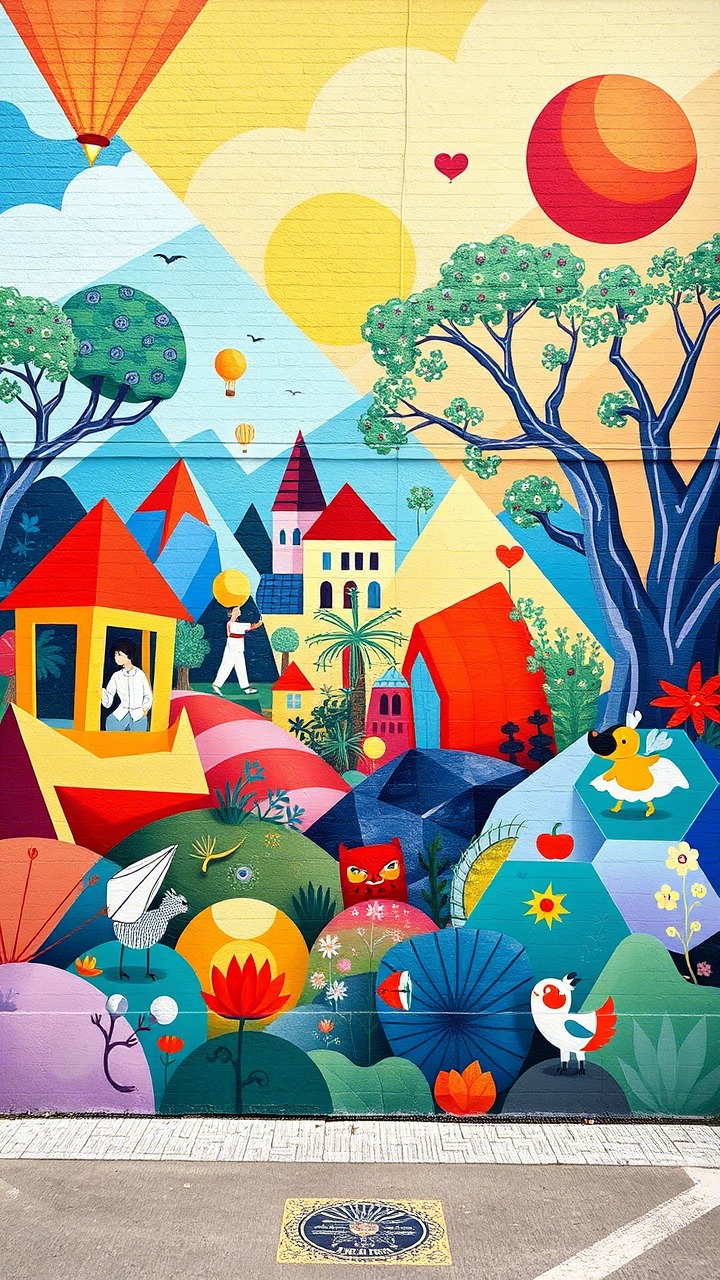
The Idea: Paint a mural on your wall. This doesn’t have to be an intricate, photorealistic masterpiece! Simple mountain ranges, abstract color fields, oversized botanicals, or even a constellation of dots can be incredibly impactful.
Why It Inspires Creativity: A mural is the ultimate form of wall-based artistic expression. It allows you to tell a story, evoke a mood, or simply create a stunning, one-of-a-kind visual.
Get Started:
- Start simple if you’re a beginner. Geometric murals or abstract designs are very forgiving.
- Use a projector to trace a more complex design onto the wall if your freehand skills are limited.
- Break the design down into manageable sections and colors.
- Creative Spark: Create a “negative space” mural by painting around an object or a taped-off shape, then removing it to reveal the original wall color as part of the design.
9. Sophisticated Stenciling: Intricate Patterns, Simplified
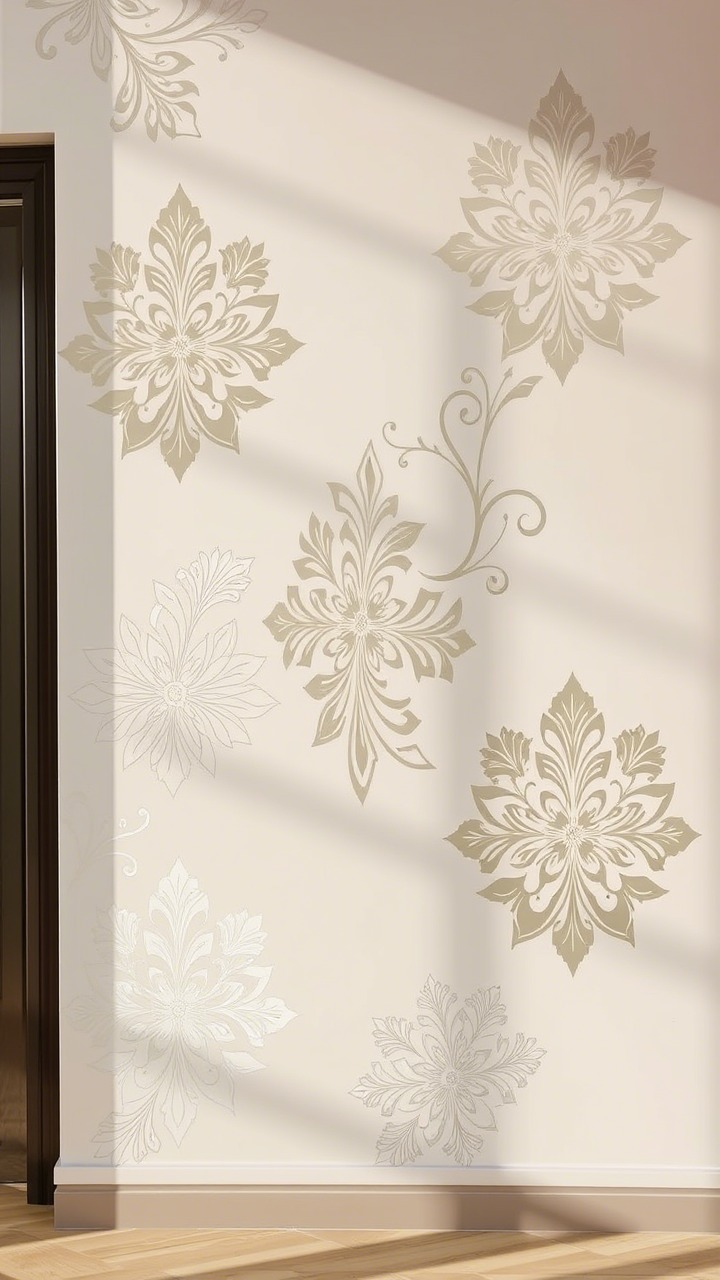
The Idea: Use stencils to apply intricate patterns, from delicate florals and Moroccan tiles to bold geometric repeats or even lettering.
Why It Inspires Creativity: Stencils open up a world of detailed design possibilities without requiring advanced painting skills. You get to play with pattern placement, color combinations, and layering effects.
Get Started:
- Choose a stencil that complements your room’s style. Large-scale stencils can create a wallpaper-like effect.
- Use a stencil brush or a dense foam roller for application. Offload excess paint onto a paper towel before applying to the stencil to prevent bleeding.
- Secure the stencil firmly with painter’s tape or a spray adhesive.
- Creative Spark: Try a tone-on-tone stenciling effect (using a slightly different sheen of the same color) for a subtle, elegant texture, or use multiple colors within one stencil design for a richer look.
10. Elegant Arches & Organic Shapes: Softening Lines, Framing Views
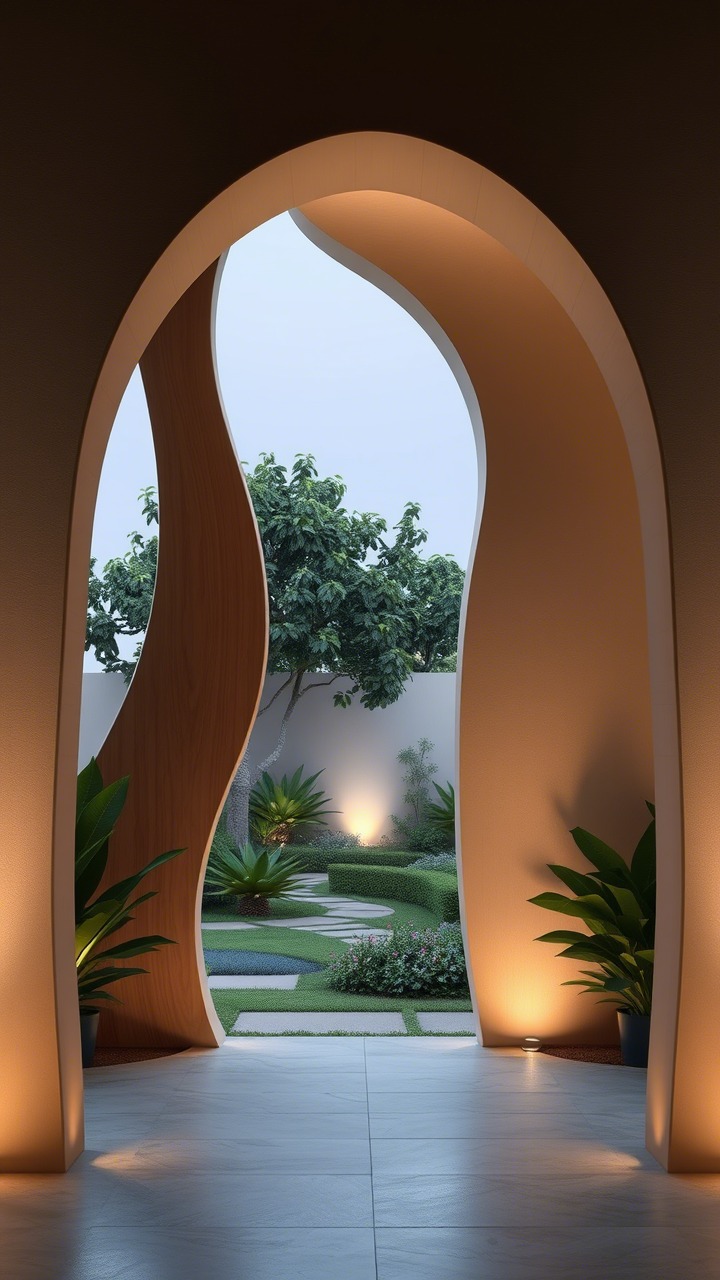
The Idea: Paint arches, circles, or soft, organic “blob” shapes on your walls to create focal points, frame furniture or artwork, or simply add a touch of playful sophistication.
Why It Inspires Creativity: This trend moves away from purely rigid geometric lines and embraces softer, more fluid forms. It’s a chance to play with curves and create gentle visual pathways or cozy nooks.
Get Started:
- To create a perfect arch, you can use the “string and pencil” compass method or trace around large circular objects.
- For organic shapes, lightly sketch your desired form on the wall first.
- These shapes look particularly stunning behind a bed (as a faux headboard), framing a desk area, or highlighting a favorite armchair.
- Creative Spark: Paint a series of overlapping arches in varying, complementary colors for a contemporary, art-deco inspired feel, or paint just the inside of an existing arched doorway a contrasting color.
Tips for Unleashing Your Creative Painting Potential:
- Don’t Be Afraid to Experiment: Start with a small wall or a less critical area if you’re nervous.
- Gather Inspiration: Create a mood board with colors, patterns, and styles you love.
- Invest in Good Tools: Quality brushes, rollers, and painter’s tape make a huge difference.
- Prep Your Walls Properly: Clean, smooth walls are essential for a great finish.
- Test Your Colors: Always test paint samples on your wall in different lighting conditions before committing.
- Embrace Imperfection (Sometimes): For some creative techniques, slight imperfections add to the charm and handmade feel.
- Most Importantly, Have Fun! This is your space to personalize.
Your walls are waiting for their creative awakening. Pick an idea that resonates with you, gather your supplies, and transform your home into a stunning reflection of your unique style. Happy painting!
Frequently Asked Questions
Q1: What if I’m not very artistic? Which of these creative ideas are beginner-friendly?
A: Many of these ideas are very beginner-friendly! Geometric Patterns (with good tape), Dynamic Stripes, Artistic Color Blocking, and Sophisticated Stenciling rely more on careful planning and execution than innate artistic skill. Painting Bookshelf Backs/Niches or an Interactive Chalkboard Wall are also very achievable. For murals, start with very simple shapes like mountains or abstract color fields.
Q2: How do I choose the right colors for a creative wall painting project?
A: Consider the existing colors in your room (furniture, rugs, decor). Use a color wheel to explore complementary (opposite on the wheel for high contrast), analogous (next to each other for harmony), or monochromatic (shades of one color) schemes. Think about the mood you want to create – warm colors energize, cool colors calm. Always test samples!
Q3: What are the essential tools I need for these more creative painting ideas?
A: Beyond standard rollers and brushes, you’ll likely need:
- High-quality painter’s tape (FrogTape is excellent for sharp lines).
- A level (traditional or laser) for straight lines and patterns.
- Measuring tape and pencil for planning.
- Small artist brushes or stencil brushes for detail work.
- Paint trays and liners.
- Drop cloths. For specific techniques: sponges (ombre/color wash), stencils, projector (murals).
Q4: How do I fix mistakes if my creative paint job doesn’t go as planned?
A: Don’t panic! If the paint is still wet, you can often wipe it off (latex paint with a damp cloth). If it’s dry, you can lightly sand the area and repaint. For taped lines that bleed, you can carefully touch up with a small artist brush and the base color. Remember, it’s just paint – most “mistakes” are correctable!
Q5: Can I combine multiple creative painting ideas in one room?
A: Yes, but do so thoughtfully to avoid a cluttered or overwhelming look. For example, you could have a geometric accent wall and then paint the back of your bookshelves a complementary solid color. The key is to have a cohesive color palette and ensure one idea is the “star” while others play supporting roles.
Q6: How can I adapt these ideas for a small room to make it feel more spacious and creative?
A: In small rooms, consider:
- Vertical stripes or an upward-sweeping ombre to create an illusion of height.
- Lighter, cooler color palettes for an airier feel.
- A single, well-executed feature like a painted arch behind the bed or a sophisticated stencil pattern, rather than too many competing elements.
- Metallic accents to bounce light around.
Q7: What are some budget-friendly ways to achieve a stunning, creative wall paint look?
A:
- Focus on one wall or a small area: Reduces paint and supply costs.
- Use sample pots: For small geometric blocks, stencils, or metallic accents, sample pots are often sufficient.
- DIY Stencils: Create your own simple stencils from cardboard or Mylar sheets.
- Embrace negative space: Designs that utilize your existing wall color as part of the pattern require less paint.
Q8: Are there any current creative wall painting trends I should be aware of (as of May 2025)?
A: Current trends (as of this timeframe) often lean towards:
- Organic shapes and arches: Softening traditional geometrics.
- Color drenching: Painting walls, trim, and even the ceiling the same color for an immersive feel.
- Earthy, nature-inspired murals: Think subtle landscapes, oversized botanicals.
- Textured paint effects: Limewash, Roman clay, and subtle suede looks are popular for adding depth.
- Bold, sophisticated color blocking in unexpected combinations.
Q9: How do I ensure my creative wall painting idea looks intentional and chic, not just messy or “DIY-gone-wrong”?
A:
- Plan Meticulously: Sketch your design, measure carefully, and plan your color placement.
- Invest in Good Tape: For any designs with lines or blocks, crisp edges are crucial.
- Proper Prep: Clean and smooth walls are essential.
- Quality Paint: Good paint provides better coverage and a richer finish.
- Step Back Frequently: During the process, step back to assess the overall look and make adjustments as needed.
- Less is Often More: If in doubt, start simpler. You can always add more later.
- Cohesion: Ensure your creative wall ties in with the overall style and color scheme of your room.

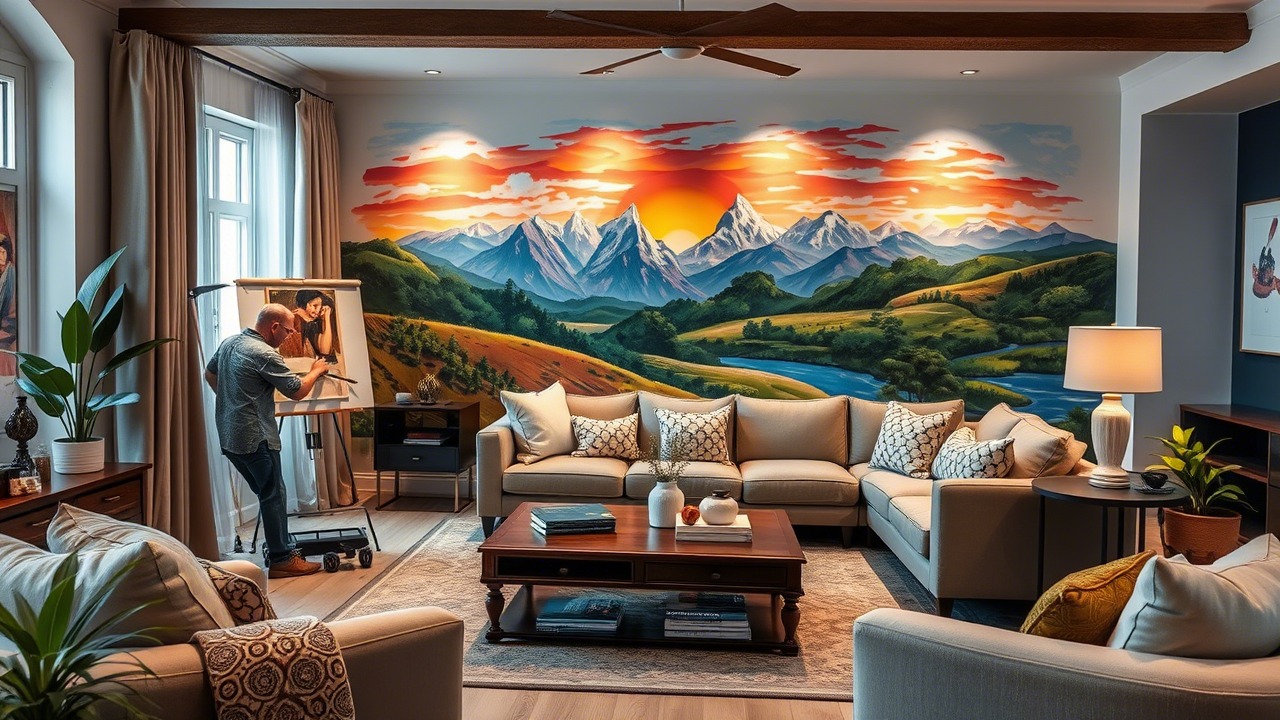
Leave a Reply